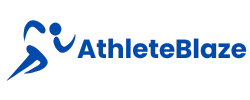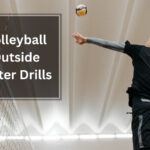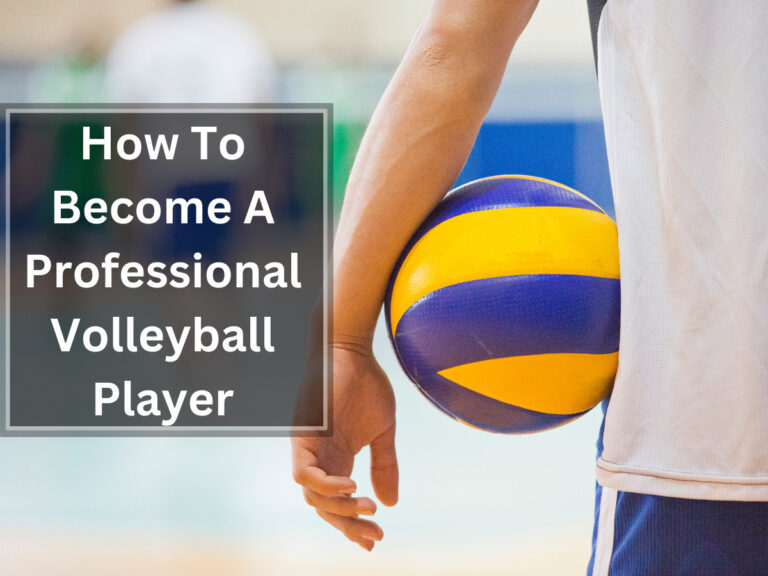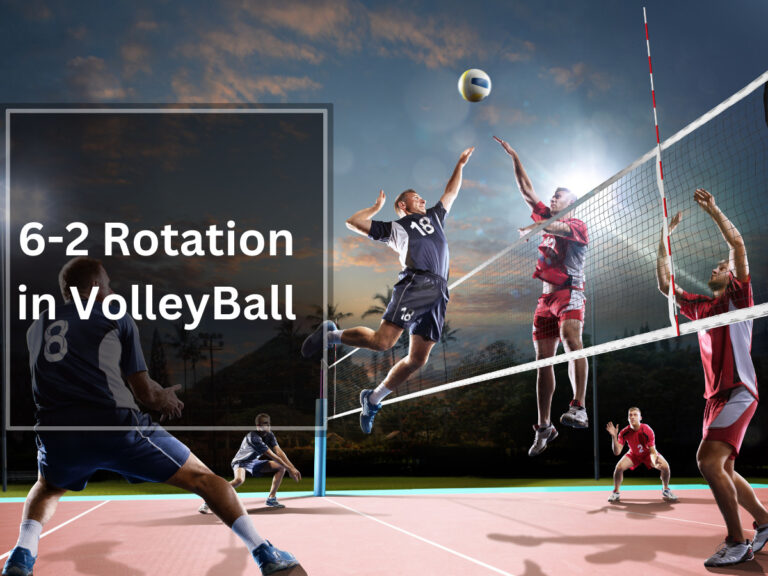How Long Is A Volleyball Game

Are you curious about how long a volleyball game lasts? Well, on average, a volleyball game typically takes between 60 and 90 minutes.
But did you know that there are several factors that can influence the duration of the game? Factors like the number of sets played, timestops (timeouts, substitutions, injury timeouts, breaks), and whether it’s beach or indoor volleyball can all play a role in determining how long the game will last.
For example, at the middle school and high school level, best of three matches are common, with each set taking around 20-25 minutes to complete. Timestops such as timeouts and substitutions also contribute to the overall length.
Beach volleyball games typically last around 45 minutes for best of three sets.
So whether you’re playing or just watching from the sidelines, understanding these factors can give you a better idea of what to expect when it comes to the duration of a volleyball game.
Table of Contents
How Long Do Volleyball Games Last
A typical volleyball game lasts between 60 and 90 minutes, with each set taking around 20-30 minutes to complete.
Strategies for managing time during volleyball games include utilizing timeouts, substitutions, and technical timeouts at specified point intervals. These timestops allow teams to regroup, strategize, and catch their breath.
Additionally, the duration of a volleyball game can be influenced by the skill level of the players. Higher-level matches often have longer rallies and more competitive sets, resulting in a longer overall game time. On the other hand, lower-level matches may have shorter rallies and quicker sets.
Ultimately, the duration of a volleyball game is dependent on various factors such as the number of sets played, timestops used by both teams, and the skill level of the players involved.
Factors Affecting Game Duration
When it comes to the duration of a volleyball game, there are several factors that can influence the length.
First, the number of sets played can affect how long the game lasts.
Additionally, timestops such as timeouts, substitutions, and breaks can also impact the overall time.
Lastly, whether the game is beach or indoor volleyball can make a difference in terms of duration.
Let’s take a closer look at these factors and how they contribute to the length of a volleyball game.
Number of Sets
To understand the duration of a volleyball game, it is important to consider how the number of sets played affects the overall time on court. Factors that can influence the duration of a set include timeouts, substitutions, and breaks.
In beach volleyball, matches typically consist of best of three sets, with each set played to 21 points. The shorter point total in beach volleyball sets allows for quicker completion compared to indoor volleyball sets.
On the other hand, indoor volleyball matches often consist of best 3-of-5 sets, with each set played to 25 points. The longer point total in indoor volleyball sets can contribute to a longer overall game duration.
It is worth noting that the actual time it takes to complete a set can vary depending on factors such as the skill level of the teams and the length of rallies.
Overall, the number of sets played in a volleyball game can have a significant impact on the duration of the game.
Timestops
Timestops, such as timeouts and substitutions, can significantly impact the flow of a volleyball match. These breaks in play not only affect the overall duration of the game but also have an impact on player performance.
Timeouts are used strategically by teams to regroup, discuss tactics, and catch their breath. They provide players with a brief moment to rest and refocus before continuing the game.
Substitutions, on the other hand, allow teams to bring in fresh players who can provide a new burst of energy and skill. However, these timestops can also disrupt momentum and rhythm for both teams.
The frequency and length of timestops in a match can vary depending on the level of play and specific rules being followed.
Overall, timestops play a crucial role in shaping the duration and dynamics of a volleyball game while simultaneously affecting player performance.
Beach vs Indoor
Immerse yourself in the exhilarating world of volleyball by exploring the unique dynamics and strategies of beach versus indoor play.
Beach volleyball and indoor volleyball may share similarities, but they also have distinct differences that make each style of play exciting in its own right.
In beach volleyball, the game is played on sand with two players on each side. The smaller court size requires players to cover more ground, leading to longer rallies and a focus on agility and quick reflexes. With only two players per team, communication and teamwork are crucial for success.
On the other hand, indoor volleyball is played on a hard court with six players on each side. The larger court size allows for more complex plays and strategic positioning. Indoor gameplay often involves powerful serves, strong blocks at the net, and precise hitting techniques.
Whether you prefer the sun-soaked sand or the controlled chaos of an indoor arena, both beach and indoor volleyball offer thrilling experiences that showcase the athleticism and skill of the players. So grab your sunscreen or lace up your sneakers – it’s time to hit the court!
Average Set Duration
Set duration in volleyball can vary, but on average, a set takes around 20-30 minutes to complete. The length of a set can be influenced by factors such as the level of play and the skill of the players involved.
Higher-level matches tend to have longer rallies, which can extend the duration of each set. In these intense and competitive games, rallies can last up to 50 touches or more, resulting in longer sets.
On the other hand, lower-level matches may have shorter rallies and consequently shorter sets. Additionally, player skill plays a significant role in game duration. Skilled players are often able to prolong rallies and make it more challenging for their opponents to score points quickly.
Therefore, the better the teams and players involved, the longer each set is likely to be.
Time Limits and Scoring Systems
The duration of each set in volleyball can be influenced by various factors, such as the level of play and the proficiency of the players involved. Player skill also plays a significant role in game duration. Higher-level matches often have longer rallies and more competitive play, resulting in longer sets. However, lower-level matches may have shorter durations due to less skilled players and quicker rallies.
In terms of scoring systems, indoor volleyball sets require 25 points to win, while tie-breaker sets require 15 points. On the other hand, beach volleyball sets require 21 points to win, with tie-breaker sets also requiring 15 points. It’s important to note that teams must win a set by at least two points.
So, the impact of player skill on game duration is evident in the varying lengths of volleyball sets.
Variations in Game Duration
Step onto the court and witness the ebb and flow of time as each intense rally unfolds, painting a vivid tapestry of anticipation and excitement. The duration of a volleyball game can vary depending on several factors that influence gameplay.
Here are some key factors to consider:
Number of Sets: Volleyball games can be played with 2-of-3 sets or 3-of-5 sets, which directly impacts the overall duration.
Timestops: Time is stopped or play is suspended during timeouts, substitutions, injury timeouts, and breaks. Teams can strategically use their timeouts and substitutions to manage time effectively.
Strategies for Managing Timestops: Coaches often employ various strategies to manage timestops efficiently, such as using timeouts strategically to break momentum or give players rest.
Beach vs Indoor Volleyball: Beach volleyball matches typically last around 45 minutes due to lower point requirements and fewer sets compared to indoor volleyball.
By understanding these factors and employing effective time management strategies, players and teams can maximize their performance while enjoying the thrilling experience of a volleyball game.
Frequently Asked Questions
How many timeouts does each team have per set?
Each team in volleyball has two timeouts per set. Timeouts are strategic breaks that allow teams to regroup, discuss tactics, and potentially disrupt the momentum of their opponents. The number of challenges allowed per set varies depending on the level of play and specific rules.
What is the duration of a tie-breaker set in indoor volleyball?
In a tie-breaker set in indoor volleyball, the duration can vary depending on the level of play and the teams involved. On average, a tie-breaker set lasts around 15-20 minutes, adding to the overall length of a volleyball game.
Are there any time restrictions in volleyball games?
There are no time restrictions in volleyball games, allowing for a flexible game duration. The length of a volleyball game can vary based on factors such as the number of sets, the level of play, and the skill of the players.
How long does a beach volleyball match typically last?
A beach volleyball match typically lasts around 45 minutes. Players use various strategies, such as communication and teamwork, to win the game. They also rely on specific equipment like sand socks and sunglasses for optimal performance.
What is the average duration of a volleyball tournament?
On average, the duration of a volleyball tournament can vary depending on factors such as the number of teams and the format. Typically, tournaments can last anywhere from a single weekend with 10-12 hour days to several weeks or months for progression tournaments. The length of matches within a tournament also varies based on set rules, but they generally range from around 60 to 90 minutes.










